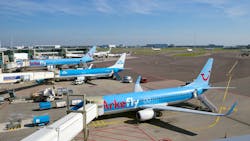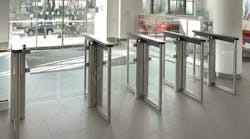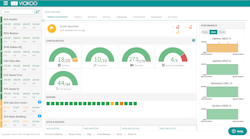A new report out this week from market research firm Frost & Sullivan predicts that passenger screening methods at airports around the world will become less intrusive in the coming years as authorities increasingly turn to automation and pre-processing initiatives to streamline the process. In fact, the research firm said that an assortment of portal scanners, biometric collection devices, and pre-clearance based on voluntary background investigations will transform the passenger screening process altogether.
Although the threat of terrorism remains the most influential market driver, efficient checkpoint processing is in high demand by airports to reduce passenger wait times. As a result, Frost & Sullivan projects that global spending on passenger screening technology will grow modestly over the next five years, reaching $1.63 billion in 2020, up from $1.42 billion in 2014.
According to a recent passenger forecast released by the International Air Transport Association (IATA), the number of global annual airline passengers will reach 7.3 billion by 2034, more than double from the 3.3 billion reported in 2014.
"To deal with the escalating passenger traffic, airports need to implement swifter and more efficient methods of passenger screening," said Frost & Sullivan Aerospace & Defense Senior Industry Analyst John Hernandez. "One solution could be to supply passengers with alternate venues and automated tools to prescreen them before they arrive at the airport."
Screening technologies enhance passenger processing, but the technology is only as efficient as those operating it. A risk-based approach to security was established to speed up the screening process, wherein screeners would focus on travelers who are perceived to present a security threat. However, accelerating the passenger screening process has been met with resistance from officials who believe it lessens the effectiveness of checkpoint operations.
Identifying high-risk passengers is only one element of establishing a more efficient airport passenger screening operation. For a more thorough system, airports are looking for innovative technologies capable of screening a large number of people quickly and accurately. Additionally, deploying scanners than can detect nonmetallic improvised explosive devices will also be imperative.
"Airports already employ automated systems such as automated passport control kiosks and automated border control, eGates, for international travel," added Hernandez. "The next step is to transition automated passenger screening to airport checkpoints. Equipment maintenance and recurring training will be critical selling points to agencies responsible for procurement."
Click here for more information about the report.


